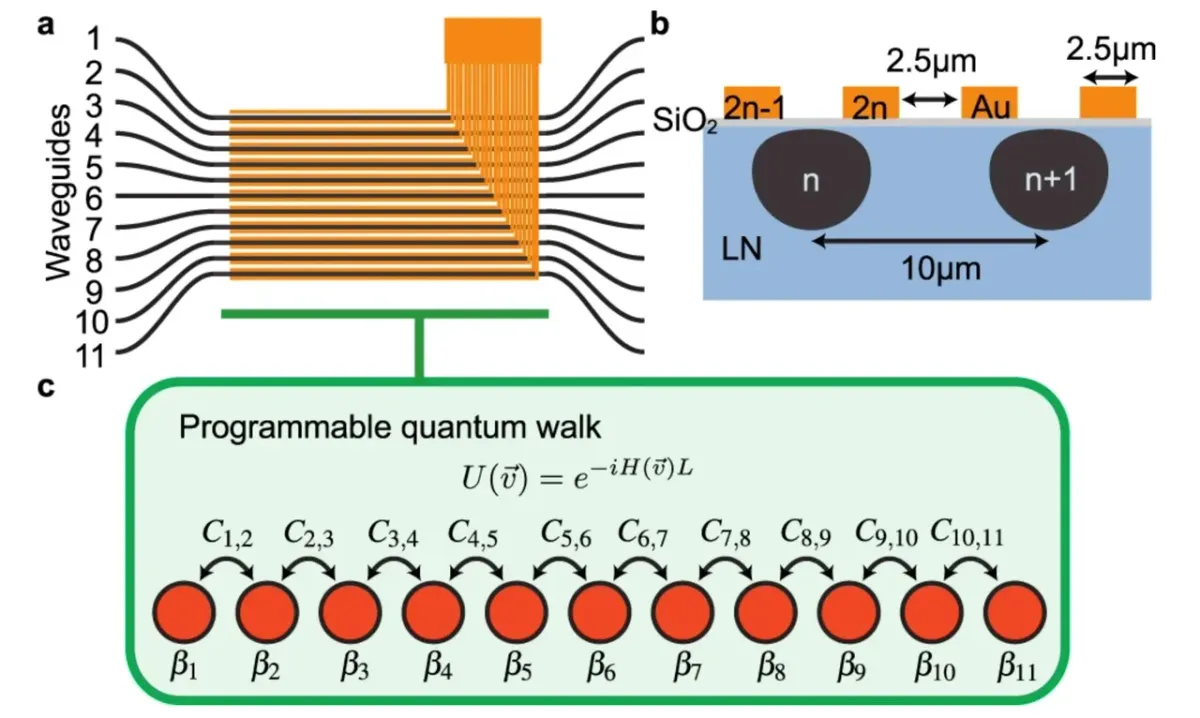In a revolutionary stride for quantum technology, a team of scientists has developed a reprogrammable light-based processor, marking a significant leap in quantum computing and communication. Published in Nature Communications, their research introduces a new era of efficient and scalable quantum processing, vital for secure data transmission and advanced sensing applications.
Groundbreaking Light-Based Processor
At the heart of this innovation is a photonics device using light particles (photons) to carry information, crafted by a collaborative effort led by Professor Alberto Peruzzo from RMIT University. This processor stands out for its reprogrammable nature, a first in the quantum computing domain, offering a flexible platform that significantly reduces light losses, a common bottleneck in photonic quantum computations.
Enhancing Quantum Efficiency and Security
The processor's design minimizes light loss, crucial for maintaining ongoing computations and enhancing overall efficiency. Beyond computational improvements, this technology heralds a new age for "unhackable" communications systems, offering robust solutions for secure data transmission and high-precision sensing applications in fields like environmental monitoring and healthcare.
A Leap in Quantum Computing and Communication
This research signifies more than just technological advancement; it represents a shift towards practical, large-scale quantum computing capable of solving complex problems beyond the reach of current computers. Such capabilities are expected to revolutionize industries including drug discovery and other applications demanding atomic-level operation precision.
Collaborative Efforts and Technological Synergy
The processor's development is the result of a global collaboration, leveraging the unique optical properties of lithium niobate and the expertise in condensed matter physics. The team's achievement in programming the photonics processor to mimic the functionality of 2,500 devices showcases the potential for a more compact and scalable quantum computing platform.
Advancing Quantum Control with Machine Learning
A notable aspect of this project is the integration of machine learning with modeling to program and control the photonic processors efficiently. This hybrid approach addresses the noise challenge in quantum computing, enhancing the precision and efficiency of quantum computations.
Implications for the Future of Quantum Technologies
The potential of this research extends far beyond the laboratory. It lays the groundwork for startup companies in quantum computing and could significantly impact the development of quantum machine-learning algorithms, especially for handling large datasets.
Envisioning a Quantum-Powered Future
The implications of this work are profound, promising a future where quantum technologies drive unprecedented computational speeds, secure communications, and the ability to tackle problems that are currently insurmountable. This isn't just speculative; it's a realistic glimpse into a future powered by the advancements in quantum computing and communication.
In conclusion, the development of the reprogrammable light-based quantum processor is a milestone in the journey towards a quantum future. It exemplifies the synergy of collaborative innovation and advanced research, paving the way for quantum technologies that could redefine our digital landscape.
Reference
“Programmable high-dimensional Hamiltonian in a photonic waveguide array” by Yang Yang, Robert J. Chapman, Ben Haylock, Francesco Lenzini, Yogesh N. Joglekar, Mirko Lobino and Alberto Peruzzo, 2 January 2024, Nature Communications. DOI: 10.1038/s41467-023-44185-z



Member discussion: